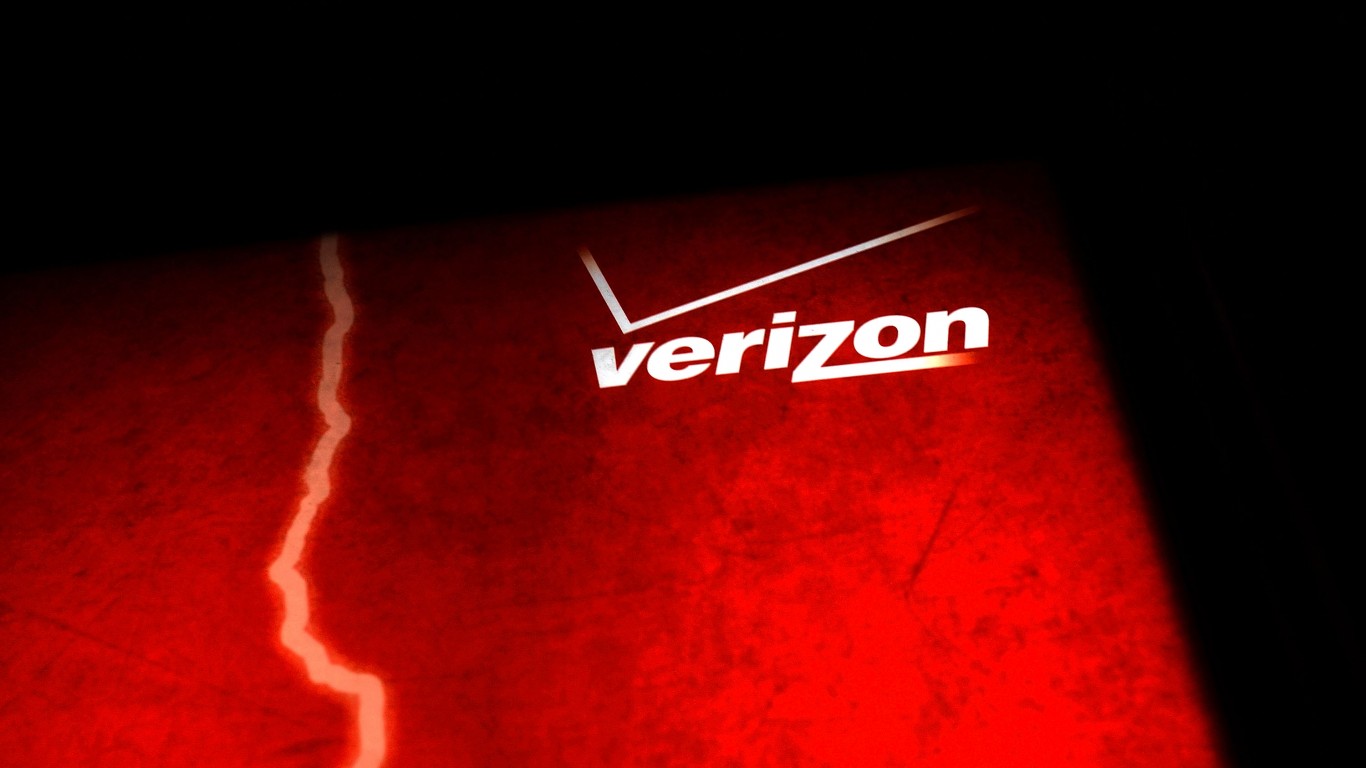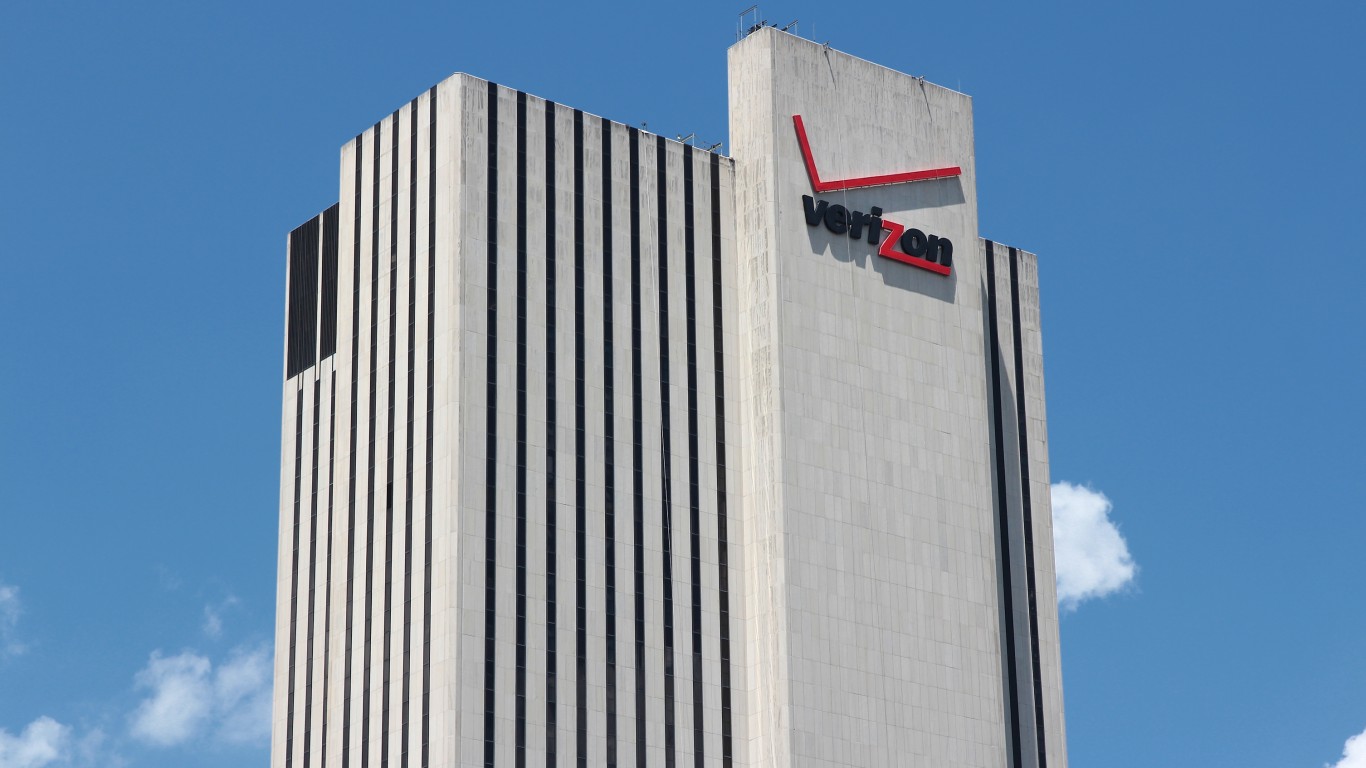Investing
Where Will Verizon (VZ) Stock Be In 10 Years? The Bull & Bear Case and Dividend Projections

Published:

Between the end of 2012 and 2022, Verizon (NYSE: VZ) stock saw its share price decline by 9%. That’s a horrible return for any stock across a decade. However, if you included dividends the company distributed across the time, its actually returned 43% to investors across that time. Believe it or not, but even with Verizon’s stock losing money, it paid out enough dividends that it beat inflation (about 30%) and anemic near zero-percent rates of many fixed income securities across that time.
So, the question becomes, where will Verizon’s share price be in the next 10 years? Let’s first look at the background of the company, then we’ll check into Wall Street forecasts for the future, and finally we’ll issue a bull & bear price where the company could be. After All, with Verizons trailing dividend yield at 7.7% in late 2023, it’s a tempting buy for any investors looking for yield.

Let’s first take a look at Verizon’s performance across recent years. We’ll look at five primary factors in its performance: sales, earnings, dividends paid, and dividend payout.
In the last decade (2012 to 2022) Verizon has seen the following levels of growth:
Verizon has raised its dividend payout by $.05 per share annually the past six years.
Another component we’ll analyze when looking ahead at where Verizon’s stock might be in a decade is Wall Street expectations. Let’s look at Wall Street expectations for the next five years:
If there’s one number you should laser-focus in here, its that Wall Street sees Verizon stopping its $.05 annual dividend increases in 2026. Whether or not current Wall Street projections are right isn’t certain, but it does raise a “yellow flag” of sorts that some analysts see Verizon’s dividend increases as on shaky ground.

Our prediction for where Verizon (VZ) stock will be in 10 years is a 158% return (bull), 73% return (base), and 0% return (bear). We’ll break down each of these scenarios in more detail below.
Our bull case scenario assumes that Verizon continues paying its dividend with a $.05 increase annually and reaches a dividend payout of $3.08 by the end of the next decade. Under this view, Verizon’s dividend will still deliver the majority of returns to shareholder.
This view also assumes that Verizon will be able to grow profits by 20%, which is consistent with the past decade. Finally, with Verizon trading for an anemic 7X earnings, we can take that to 10X assuming consistent dividend payments and a stable growth level brings more investors to the table.
So if we combine:
$28.55 (projected dividends across) + $59 (new share price at 20% profit growth and trading at 10X earnings) = $88 bull case VZ share price in a decade.
That’s a 158% total return. Just remember though, this is a bull case and assumes Verizon performs very well across the next decade.
Our base case scenario is simpler, we assume dividends pause as Verizon has to focus more on big capital projects. That combined with wireless being a flat market that’s extremely competitive leads to flat earnings growth.
In this scenario we assume $25 dollars in dividends and we’re leaving earnings flat as depreciation from more large projects cuts into earnings. In this scenario Verizon stock is still priced at about $34 per share, but it returns $25 worth of dividends.
That’s a 73% return to shareholders built entirely off dividends paid. In a world where treasuries are yielding 5% that may not seem as attractive, but if rates decrease it would still make Verizon’s stock very compelling.
Our bear case scenario relies on what’s happened to AT&T’s (NYSE: T) stock across the past decade. Even with dividend returns, AT&T is flat as their share price has decreased.
In this scenario continuing competition from not only T-Mobile (Nasdaq: TMUS) but pressure from further erosion of its wireline business leads to Verizon cutting its dividend. In that scenario there would be pressure on its share price and its returns from dividends.
If we assume $15 paid in dividends but earnings dropping 40% amidst competitive pressures and a need to invest in infrastructure, we arrive at a 0% total return the next decade.
However, we must emphasize that this is the bear case. Given Verizon trades at just 7X earnings today. Its important to note that Verizon started the last decade trading for about 40X its trailing EPS. Today that figure stands at about 7X. If Verizon continues paying its dividend near current rates, its unlikely the company would see less than a 70% return across the next decade.
After two decades of reviewing financial products I haven’t seen anything like this. Credit card companies are at war, handing out free rewards and benefits to win the best customers.
A good cash back card can be worth thousands of dollars a year in free money, not to mention other perks like travel, insurance, and access to fancy lounges.
Our top pick today pays up to 5% cash back, a $200 bonus on top, and $0 annual fee. Click here to apply before they stop offering rewards this generous.
Flywheel Publishing has partnered with CardRatings for our coverage of credit card products. Flywheel Publishing and CardRatings may receive a commission from card issuers.
Thank you for reading! Have some feedback for us?
Contact the 24/7 Wall St. editorial team.